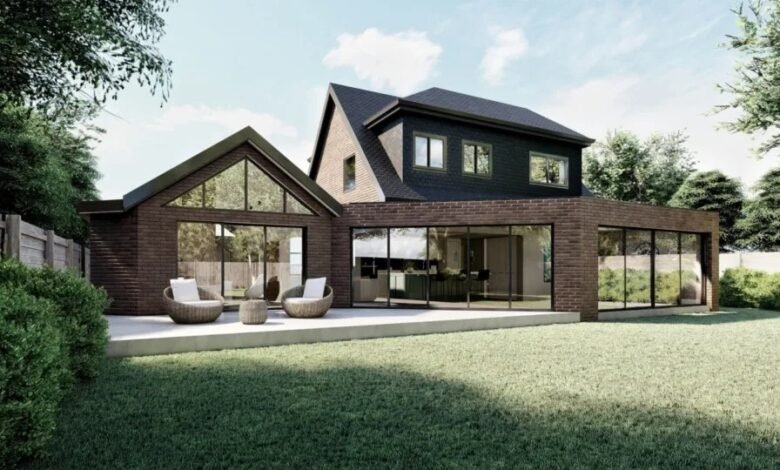HMO Planning Permission: Complete Guide for Landlords

HMO planning permission is a common programming term to landlords in the UK, particularly when growing rental stocks or redeveloping existing ones. HMOs or Houses in Multiple Occupation has been a favoured place of investment because of its higher returns in rental. Nevertheless, it is important to first of all be aware of the HMO planning permission before plunging into conversions or renting out rooms on an individual basis. This guide dissects all the information the landlords require to have such as when you require it, how to apply and the obstacles that you are likely to meet in the process.
Understanding HMO Planning Permission: What Landlords Need to Know
Fundamentally, the HMO, planning permission makes sure that multi-tenant properties abide by the envisioned legal and safety threshold that are agreed by the local councils. HMO is generally a residence that is rented by three or more non-family tenants getting the benefit of the amenities like kitchen or bathroom or other living rooms. The properties may be small joint houses to big converted properties that have several separate rooms.
Although the HMOs are a superior method of trekking benefits out of the landlords, not all properties can be used without taking the consent of the owners. The HMO planning permission is necessitated to balance the populations of the community and to avoid crowding and overcrowding as well as security of the tenants. Local governments would like to have the HMOs well maintained, secured and not adversely affect the adjacent neighbourhood.
In case a landlord does not obtain HMO planning permission where one is demanded, the risks may prove expensive and may result in not only an enforcement notice but also litigation and huge monetary costs. The impact of this means that learning about the process does not only involve watching out what meets the eyes but also out of ensuring that your investment is safeguarded in the long term.
What is an HMO and When Do You Need Planning Permission?
Not all shared houses automatically require HMO planning permission. The need for it often depends on the size of the property, the number of tenants, and local council policies. Generally, a property becomes an HMO when it is rented to three or more tenants forming more than one household, who share basic amenities.
However, when the property is occupied by five or more tenants forming two or more households, it is classed as a large HMO, and this almost always requires HMO planning permission. The classification falls under the sui generis use category, which means it doesn’t fit into standard residential classifications.
Local councils also have something known as an Article 4 Direction. This restricts landlords from converting single-family homes into small HMOs without planning approval. Many areas in London and other major UK cities have Article 4 in place to control the spread of HMOs and maintain housing balance.
If your area is under Article 4, you’ll need HMO architects even for smaller properties with three or four tenants. Therefore, checking your council’s specific requirements before starting any conversion or rental process is always recommended.
Key Regulations for HMO Properties
Gaining permission from HMO planning is just a journey. The landlords should also follow the strict housing regulations so as to be assured of the safety and comfort to the tenants. Such laws usually address the fire safety, minimum room area, garbage disposal and style of building conditions.
The bedroom will also have the least size required by the council, there should be fire doors and fire alarm fitted and cooking and bathroom space should be adequate with the number of those tenants. The council could conduct regular inspections to ensure that compliance is maintained.
Also, the HMOs also enforce a compulsory HMO licence which must not be confused with HMO planning permission. Although the permission pays emphasis on land utilisation and property classification, the licence ensures an environment of safety and operation and management inside the company. They both are necessary to allow the landlords to correctly rent, as HMOs.
Step-by-Step Guide to Applying for HMO Planning Permission
Obtaining the HMO planning permission may be an overwhelming concept, whereas the steps involved allow breaking it down to simple tasks. The first one will be research and check- up of the policies in the country, about whether you are under Article 4 or not.
The second task you will do is to elaborate on your plans of your property; you will have to show both your current plan and also the new proposals plan of the property in state of HMO. This features room area, shared facilities, fire exit points as well as any construction modifications. This stage could be made a lot easier with an experienced architect or planning consultant working on it.
When you are planning well, you need to make a formal planning application using the planning site of your local council. You will be mandated to make an application fee and you may have to submit supporting documents (design and access statement or a property management plan).
On your part, you submit and the council would review your application, which may also include entering your site on field visit to investigate. Neighbours can also be informed and a chance can be availed to them so that they can comment. Depending on the complexity of your proposal the process of reviewing it may need not less than 8-12 weeks.
Your facility will be approved through letters written to you permitting HMO planning, you can have your conversion. In case of rejection, the right to appeal or to make corrections referring to comments and resubmit will be given.



